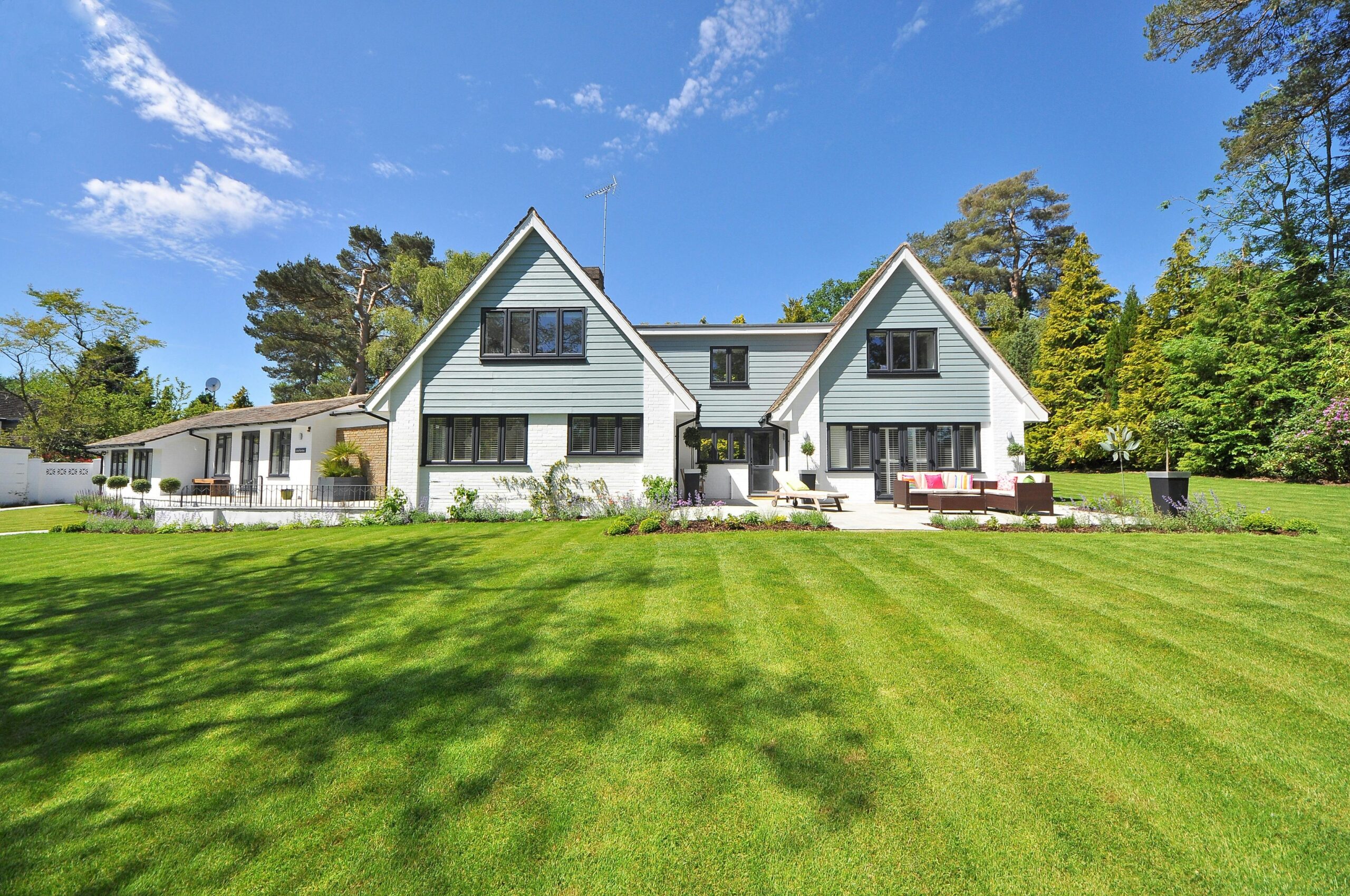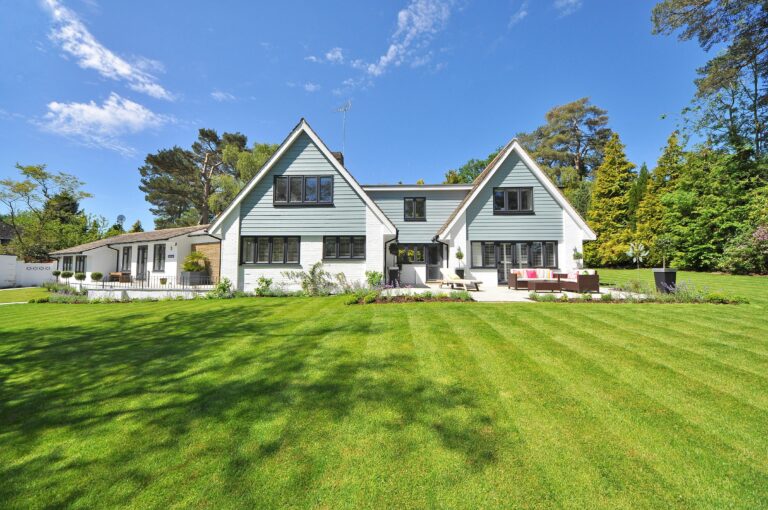
In the last decade, smart home technology has evolved from a luxury to a near-necessity in modern homes. By 2025, the U.S. real estate market is poised to see buyers prioritizing properties equipped with cutting-edge technology that offers convenience, energy efficiency, and enhanced security. Whether you’re a first-time homebuyer or a seasoned investor, understanding the trends in smart home technology can help you make informed decisions. Here’s a deep dive into what to expect in 2025.
What Defines a Smart Home in 2025?
Smart homes are no longer just about controlling lights or thermostats remotely. In 2025, they represent fully integrated ecosystems designed to simplify everyday living. A smart home of the future will likely include:
- Connected Devices: From refrigerators that track grocery supplies to mirrors that provide health updates, nearly every device in the home will communicate with one another seamlessly.
- AI-Driven Automation: Artificial intelligence (AI) will drive systems that learn and adapt to the occupants’ preferences, such as adjusting room temperatures based on time of day or suggesting energy-efficient appliance usage.
- Sustainability Focus: With rising environmental concerns, smart homes are now geared toward energy efficiency, including solar panel integration, smart water management systems, and advanced waste-reduction tools.
Key Features Buyers Will Expect
1. Advanced Security Systems
Security remains a top priority for both new homeowners and property investors. Buyers in 2025 are looking for smart security systems that go beyond basic cameras and alarms.
- Facial Recognition and Biometric Entry: Keyless entry using fingerprint scans or facial recognition will become standard, ensuring both convenience and safety.
- Proactive Alerts: Advanced security systems now feature AI capabilities that can differentiate between harmless movements (like a pet) and potential intruders.
- Integrated Neighborhood Security: Some communities are adopting neighborhood-wide smart security networks, creating a safer environment for residents.
2. Health-Focused Smart Technology
Health and wellness have emerged as significant priorities in smart home design. Modern buyers want features that promote physical and mental well-being.
- Air Quality Monitors: Systems that track indoor air quality and remove allergens, pollutants, and bacteria are increasingly in demand.
- Smart Kitchens: Appliances equipped with nutritional tracking and portion control help residents maintain a healthy lifestyle.
- Sleep Optimization: Bedrooms outfitted with smart beds, blackout window tech, and circadian lighting systems can enhance sleep quality.
3. Energy Efficiency and Sustainability
The rising costs of utilities and a growing awareness of environmental issues have driven demand for homes with energy-efficient technology.
- Smart Energy Management: Systems that provide real-time energy usage data and suggest optimizations are key selling points.
- Net-Zero Homes: Properties that generate as much energy as they consume, often through renewable energy sources like solar or wind, are increasingly sought after.
- Water Efficiency: Smart irrigation systems and leak detectors appeal to eco-conscious buyers and save money in the long run.
4. Seamless Entertainment Systems
Entertainment remains a major aspect of smart homes. Buyers want systems that cater to their hobbies and leisure activities.
- Integrated Media Systems: Home theaters, whole-house audio systems, and VR-ready gaming setups are growing in popularity.
- Voice-Controlled Entertainment: Voice assistants that allow users to queue movies, playlists, or games are becoming essential.
- Multi-Device Syncing: Entertainment platforms now sync seamlessly across devices, making it easy for users to pick up where they left off, whether on a TV, tablet, or smartphone.
What This Means for First-Time Homebuyers
For first-time homebuyers, navigating the smart home landscape can be overwhelming. Here’s how to approach it:
Focus on Essential Features
You don’t need a home with every cutting-edge gadget. Prioritize features that align with your lifestyle, such as smart thermostats, energy-efficient appliances, or robust security systems.
Consider Long-Term Savings
While smart homes may have a higher upfront cost, their energy efficiency and automation can lead to significant savings over time. Solar panels, for example, can lower electricity bills, and smart irrigation systems can reduce water costs.
Look for Future-Ready Homes
When evaluating properties, opt for homes with scalable systems. A property with a robust smart hub, for instance, will make it easier to add new devices and technologies in the future.
What This Means for Real Estate Investors
Investors are uniquely positioned to capitalize on the growing demand for smart homes. Here’s how:
Increase Property Value
Smart home features are no longer just perks—they’re becoming key selling points. Investing in smart upgrades can significantly boost your property’s market value and appeal.
Cater to the Renters’ Market
Many renters, especially millennials and Gen Z, are drawn to smart technology. Properties equipped with these features can command higher rents and attract long-term tenants.
Stay Ahead of Trends
Investors who stay updated on smart home advancements can identify properties with the most promising ROI. For example, homes with renewable energy systems may qualify for tax incentives or appeal to eco-conscious buyers.
The Role of 5G in the Smart Home Revolution
The rollout of 5G technology is expected to accelerate the adoption of smart homes. With faster internet speeds and lower latency, 5G allows for more reliable connectivity between devices. This is particularly important for large homes with multiple smart devices.
For buyers, this means ensuring their potential home is 5G-ready, with strong network infrastructure in place. Investors, on the other hand, should consider retrofitting older properties with upgraded wiring and network capabilities to appeal to tech-savvy buyers.
Smart Homes and Real Estate Marketing
For real estate professionals, the rise of smart homes presents both challenges and opportunities. Agents must be prepared to showcase the benefits of smart home features and communicate their value to buyers. Here are a few tips:
- Highlight Savings Potential: Emphasize the long-term savings buyers can achieve through energy-efficient systems.
- Offer Hands-On Demonstrations: Virtual tours or in-person demonstrations of smart systems can help buyers envision themselves using the technology.
- Stay Informed: Keeping up with the latest smart home trends ensures you can answer buyer questions and position yourself as a knowledgeable resource.
Potential Challenges for Smart Home Buyers
While the benefits of smart homes are undeniable, there are challenges to consider:
- Privacy Concerns: Buyers may worry about potential breaches as more devices collect data. Look for homes with strong cybersecurity measures in place.
- Compatibility Issues: Not all smart devices work seamlessly together. Investing in homes with a centralized smart hub can mitigate this.
- Maintenance Costs: Advanced technology may require more frequent updates or repairs. Ensure warranties are included for high-ticket items.
Looking Ahead: The Smart Home of 2030
While 2025 will see widespread adoption of smart home technology, the next wave of innovation is just around the corner. By 2030, buyers can expect:
- Robotics Integration: Robots perform household tasks, from cleaning to preparing meals.
- Augmented Reality Features: AR technology enables virtual interior design or interactive learning environments for kids.
- Predictive AI: Systems that not only adapt to habits but anticipate needs, like preparing a room for a guest based on calendar entries.
For real estate professionals, staying ahead of these advancements will be crucial in meeting buyer expectations in the years to come.

The evolution of smart homes is transforming the real estate landscape in the United States. By 2025, buyers—whether first-timers or seasoned investors—will expect properties to offer convenience, efficiency, and enhanced quality of life through integrated technology.
Understanding these trends isn’t just about staying current; it’s about making smarter decisions in an increasingly tech-driven market. For buyers, this means finding homes that balance cutting-edge features with practical benefits. For investors, it’s about adding value to properties and tapping into a growing demand.
The smart home revolution is here, and those who embrace it will thrive in the competitive real estate market of 2025 and beyond.





